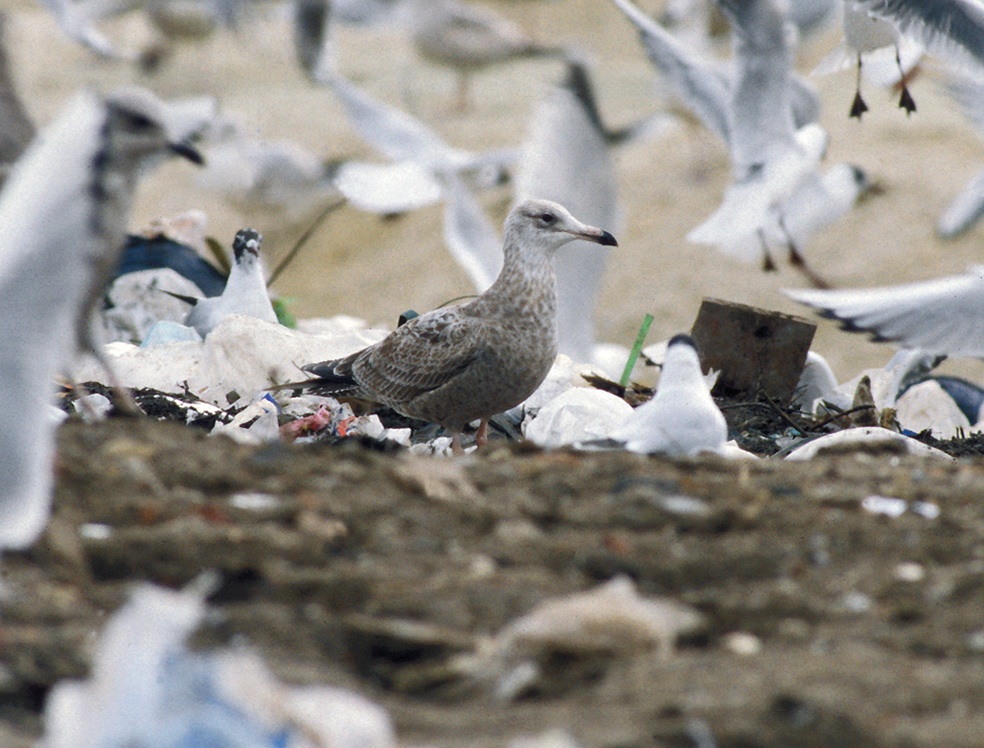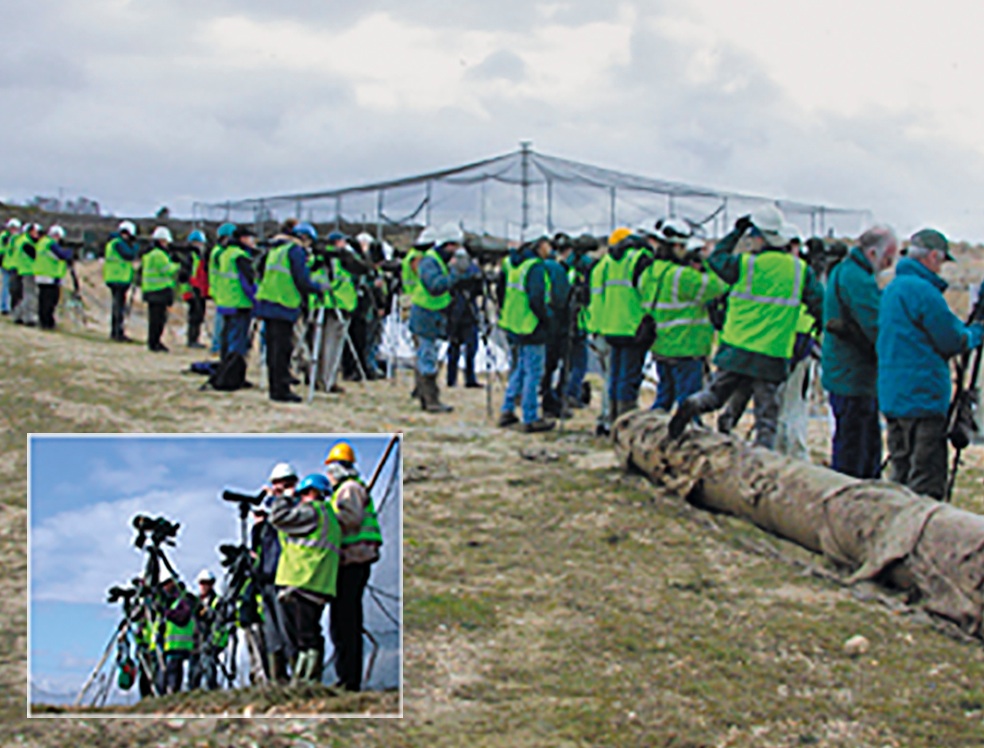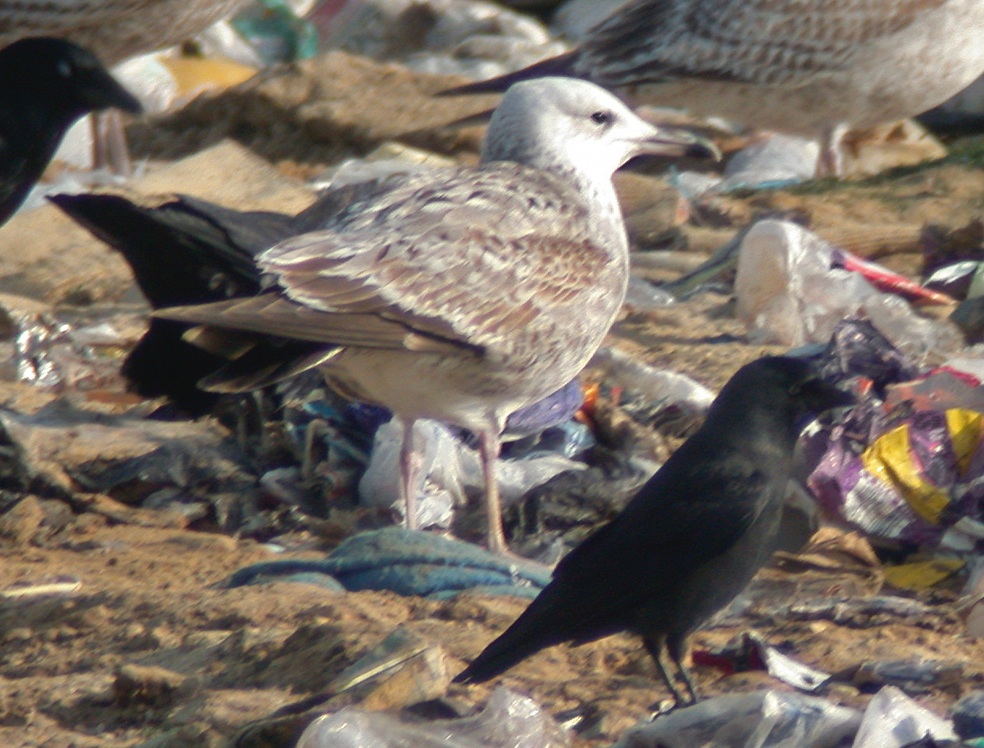Chapter 9: ‘appiness
Simon Emmerson is a birder and musician and over the past few years, he and I have been involved in making music for an English spa. It’s a broad, multicultural, British sort of Englishness, which draws on everything from sea shanties to The Clash. Being birders, we like to pop in a bit of bird sound. This means that people of Paris or Tokyo may find themselves being massaged to the sound of a Song Thrush, with Corfe Castle church bells in the background (CD1-36), or a Mistle Thrush singing at dawn from Slepe Copse (CD1-37).
CD1-36: Song Thrush Turdus philomelos Purbeck Hills near Corfe Castle, Dorset, England, 09:00, 1 June 2008. Song of a male, accompanied by church bells. Background: Common Wood Pigeon Columba palumbus, Eurasian Wren Troglodytes troglodytes, Dunnock Prunella modularis, Common Chiffchaff Phylloscopus collybita and Common Chaffinch Fringilla coelebs. 08.013.MC.04405.32
CD1-37: Mistle Thrush Turdus viscivorus Slepe Copse, Poole Harbour, Dorset, England, 05:46, 3 May 2010. Song. Background: Mallard Anas platyrhynchos, Eurasian Wren Troglodytes troglodytes, European Robin Erithacus rubecula, Common Redstart Phoenicurus phoenicurus, Common Blackbird Turdus merula, Eurasian Blackcap Sylvia atricapilla, Common Chiffchaff Phylloscopus collybita, Goldcrest Regulus regulus, Common Treecreeper Certhia familiaris, European Blue Tit Cyanistes caeruleus, Great Tit Parus major, Long-tailed Tit Aegithalos caudatus, Western Jackdaw Corvus monedula, Carrion Crow Corvus corone, Common Chaffinch Fringilla coelebs and Eurasian Siskin Spinus spinus. 100503.MC.054600.01
It is interesting to consider which birds are very British… How about Rooks, and perhaps Tawny Owl, if only because they can be found in the background of every BBC TV whudunnit? I tried recording a melancholic Robin singing on Thomas Hardy’s grave in Stinsford churchyard (CD1-38), but Simon hasn’t used that one yet.
CD1-38: European Robin Erithacus rubecula Stinsford church, Dorchester, Dorset, England, 09:32, 22 March 2009. Song while perched on Thomas Hardy’s grave. Background: Dunnock Prunella modularis, Mistle Thrush Turdus viscivorus, European Blue Tit Cyanistes caeruleus, Great Tit Parus major, Common Chaffinch Fringilla coelebs and European Greenfinch Chloris chloris. 090322.MC.093200.12
For me Herring Gull is a must, accompanying By the Sleepy Lagoon as it introduces Desert Island Discs on BBC radio 4 (or the Home Service as my mum still calls it). The theme music has been used for nearly 70 years, but it wouldn’t be the same without the ‘sea gulls’. In each episode, a celebrity imagines being marooned on a desert island, and has to select some music, a book and a luxury they would like to have with them. In the ‘70s, the presenter Roy Plomley misunderstood Brigitte Bardot’s strong French accent when she declared her chosen luxury to be “a peenis”. Plomley, a little taken aback, said: “Most interesting and why, precisely, may I ask?” “Well,” explained Bardot, “it’s what the world needs most – ‘appiness.” Which brings me very neatly to James, who is never happier than when he can hear gulls. Preferably thousands of them as they circle a rubbish tip.
His favourite venue was Beacon Hill landfill, where he would peer through the chain link fence like a fan at the stage door. Never popular with birders’ spouses, a fascination with dumps is almost normal for birders. Yvie, James’s girlfriend at the time, did get to share her boyfriend’s strange obsession when on the first anniversary of their relationship in February 2000 they found an Iceland Gull.
Birding with Yvie had got him noticed, and although he was alone on his next visit, the site manager came over and asked him what he was up to? James sheepishly explained his ‘problem’. Would he like to come in? James was confused. Normally site managers throw you off; they don’t invite you in. Delighted, he explained his surprise and the chap said, “we are going to be here for 25 years and not many people like that idea. Those that do we welcome with open arms.”
James started to visit regularly, very regularly. At first he borrowed a hard-hat and high visibility jacket, but soon he had his own. During February, March and April, the three most productive months for gull watchers, he became friends with the staff and other tip regulars, leaving his parents puzzled when skip lorry drivers honked and waved as they passed him driving round the town. His gull watching was going well too, notching up another Iceland and an adult Ring-billed Gull.

Smithsonian (American Herring) Gull Larus smithsonianus, Corfe Mullen tip, Beacon Hill, Dorset, 11 March 2002 (Graham Armstrong)

Birders at the Corfe Mullen tip, Beacon Hill landfill site, Dorset, 5 and 9 March 2002 (James Lidster)
Gull identification is a fast moving game, and you have to be on the ball to keep up with the latest developments. James worked hard, and this paid off when on 11 April 2001 he found and identified a vagrant Kumlien’s Gull, the subtly different North American version of Iceland Gull. Graham Armstrong, Andy Farr and Iain Prophet got there in a tick, and were ceremoniously lent hard hats and jackets before being signed in to what was becoming one of the most select rarity sites in the area.
James was back again next year for the start of the 2002 season, kicking off with an adult Ring-billed Gull in February. On 4 March, James arrived for ‘work’ as usual at 09:00 and was confronted by over 8,000 gulls. In the next two and a half hours he systematically worked his way through them. Reaching an end, he was about to take a break when he noticed “an obvious two toned bill on a 1st winter herring gull”. Although not unusual in itself, he then noticed how uniform its underparts were, and that it had a large section of retained juvenile rear scapulars, all looking superbly fresh. Surely it was an American Herring Gull (also known as Smithsonian Gull).
Being wary of the many pitfalls, he was just pondering over the high degree of variation that existed within argenteus when suddenly the whole lot took to the air. The commotion was due to the arrival of a Red Kite, normally a joyous event but not right at this moment. He started to panic. What if his gull disappeared? Could he claim it on these views? Should he put it out? Having briefly seen the tail pattern as it went into the air he decided he had seen enough and put the news out.

Caspian Gull Larus cachinnans, Corfe Mullen tip, Beacon Hill, Dorset, February 2003 (James Lidster)
After more than an hour’s anxious wait, the kite eventually moved on. The birds resettled and to his relief James quickly relocated the American Herring Gull and was able to satisfy himself completely with the identification. Only Nick and Brett Spencer managed to get there before the tip closed, and when the bird didn’t show the next day it looked like it was going to be a real Dorset blocker for the lucky three. Thankfully for the rest of us, it did come back the day after that, settling into a routine and becoming the first twitchable mainland English bird, staying until 6 May.
Over 300 of us were welcomed at Beacon Hill. Everyone, including all the locals, was signed in and given safety wear. We all stood in lines in amongst the rubbish, looking like a scene from Star Wars, hats glinting in the sunlight as we peered down our scopes. We bought the site employees a Collins bird guide and a pair of binoculars.
James then completed a hat trick of ‘live’ Dorset firsts (Kumlien’s Gull had previously been found dead) when he found and photographed a Caspian Gull on 19 February 2003. Unfortunately this bird didn’t hang around.